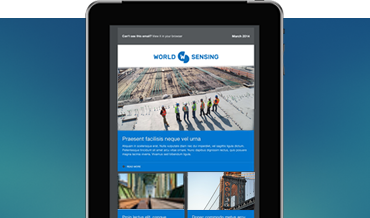IoT remote monitoring of open-pit mines

Three out of five companies interested in remote monitoring for open-pit mines are already gathering data using wireless solutions, according to a poll by Worldsensing. But the poll, carried out as part of a webinar on Internet of Things (IoT) remote monitoring of open-pit mines, showed a third of respondents were still relying on manual methods for data capture, highlighting how mine operators have a way to go in improving monitoring efficiency.
Enhancing levels of safety and efficiency is crucial in mining as the sector sees soaring demand for minerals, predominantly resulting from the transition to cleaner energy sources. According to the accountancy and consulting firm PwC, the need for critical minerals is expected to grow over the next three decades, with some estimates suggesting that annual demand from clean energy technologies could top $400 billion by 2050.
“We’ve got rapidly expanding sites, we’ve got a workforce shortage,” commented Kelsey Kidd, North American sales manager at Worldsensing, in the webinar. “Data reliability is of the utmost importance at this point.”
Human error implicit with common manual monitoring techniques “is not going to be sustainable moving forward,” she added.
Meeting the need for reliable real-time data
Mining operators face the need for reliable real-time data to ensure the safety of workers on open-pit mines, while complying with a growing range of regulations, Kidd said. These challenges can all be addressed through secure long-range, low-power LoRa communications networks and devices that can be installed easily and scaled up to meet the growing needs of the mining operator.
Worldsensing’s technology platform for mines meets these requirements and can deliver cost savings on monitoring while improving the frequency and availability of data. The company’s monitoring solution uses on-premises or cloud-based network architectures to connect sensor-linked wireless data loggers that can last up to 10 years in the field thanks to their low power consumption.
The loggers use long-range radio to transfer data up to nine miles to a gateway and the Connectivity Management Tool or CMT software that enables users to perform network health checks and provides data that may be forwarded for analysis by third-party software. When integrating the Worldsensing solution with their existing IT infrastructure or monitoring portfolio, mining owners and operators benefit from the widest integration capabilities available, making it easy to add legacy sensors and systems and new devices to the monitoring setup. Compared to manual monitoring, the monitoring solution allows open-pit mining operators to work with a safer and more cost-effective approach. Especially when it comes to installation and maintenance, more regular or real-time monitoring reduces time spent in the field to gather readings and supports data-driven actions resulting in quicker decision making.
Helping to improve health and safety
Reducing the need for engineers to carry out monitoring trips in the field helps to improve the health and safety of workers. Remote IoT monitoring is a useful complement to geospatial monitoring technologies such as total stations, ground-based radar or satellite, said Juan Pérez Arcas, Head of Instrumentation and Monitoring at Worldsensing.
“These techniques are mainly focused on collecting surface information,” said Pérez. “The other group, in-situ ground-based sensors, target parameters that are related to slope failure mechanisms.”
This makes ground-based IoT technologies vital for detecting early warning signals of failures in open-pit mines. “Considering these challenges and particularly the dimensions [of mines], the advantages are clear of using a low-power, wide-area network,” Pérez said.
To find out more, watch the webinar now.
